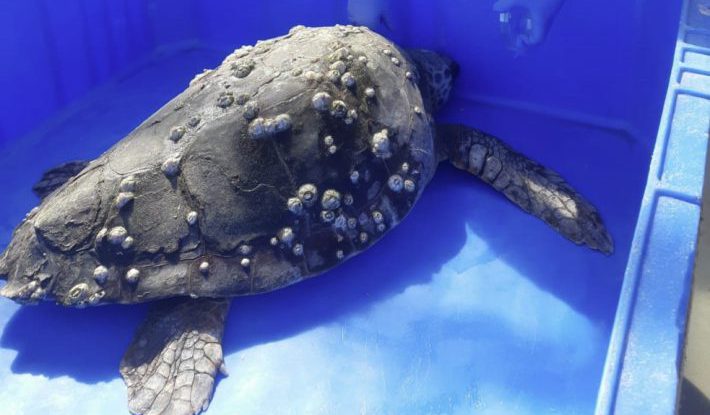Study Reveals Alarming Spread of Antibiotic-Resistant Bacteria in Sea Turtles Along Israel’s Coast
A new study by the University of Haifa, in collaboration with the Israel Nature and Parks Authority’s National Sea Turtle Rescue Center and the Kimron Veterinary Institute, has uncovered a troubling development in the Mediterranean: three out of four bacteria isolated from sea turtles along Israel’s coast show resistance to multiple antibiotics.
Published in Total Environment Microbiology, the research sheds light on the increasingly dire state of marine health in the region, linking human-origin pollution to rising levels of antibiotic resistance in marine wildlife.
“Sea turtles serve as a natural warning sign for the condition of our marine environment,” said Dr. Danny Morick, marine veterinarian and researcher at the Morris Kahn Marine Research Station at the Leon H. Charney School of Marine Sciences, University of Haifa. “When they show such high levels of resistance, it’s a clear indication that the marine system is absorbing significant pollution from land-based sources.”
Sea Turtles as Environmental Sentinels
Due to their long lifespans, migratory behavior, and frequent contact with polluted coastal habitats, loggerhead and green sea turtles are considered effective bioindicators of marine environmental health. These creatures often accumulate pollutants—including heavy metals, plastics, and now, antibiotic-resistant bacteria—making them vital indicators of ecological stress.
In the current study, a team led by master’s student Vanessa Bachmann, Dr. Morick, Dr. Dalit Meron, Prof. Dan Tchernov, Dr. Yaniv Levy, and Drs. Shlomo Blum and Marcelo Fleker collected samples from 23 injured turtles undergoing rehabilitation at the Michmoret Rescue Center between 2019 and 2021. The turtles, many harmed by fishing equipment, marine debris, and storms, were tested for bacteria in their respiratory tracts, skin, and digestive systems.
The researchers isolated 93 different bacterial strains, identifying them through bacterial culturing, 16S rRNA genetic sequencing, and antibiotic susceptibility testing.
Disturbing Resistance Levels
The analysis found that 75% of the isolated bacteria displayed multidrug resistance (MDR). Particularly concerning was the high resistance to antibiotics frequently used in human medicine:
- 95% resistant to cefazolin
- ~50% resistant to ampicillin
- ~45% resistant to amoxicillin-clavulanate
Many of the bacterial strains belonged to genera such as Vibrio, Shewanella, and Psychrobacter — organisms known to cause illness in both marine life and, in some cases, pose zoonotic risks to humans.
“These findings highlight how pollution from land sources can reach the sea, create resistant bacteria, and ultimately pose a risk that circles back to us,” said Dr. Yaniv Levy, director of the National Sea Turtle Rescue Center.
A video into the marine ecosystem, sea turtles reveal environmental threats that are otherwise hidden beneath the surface. According to Dr. Levy, this underlines the critical role of wildlife monitoring in preventing future public health risks.
Call for a ‘One Health’ Approach
The study’s authors advocate for long-term monitoring programs and an integrated ‘One Health’ approach, which connects environmental, animal, and human health. They stress the importance of addressing antibiotic resistance as a global ecological threat, not just a medical one.
“Understanding resistance patterns can help us reduce human-sourced pollution and protect marine ecosystems for future generations,” the team concluded.
This research reaffirms the vital role that marine conservation, waste management, and sustainable antibiotic use play in maintaining the balance of our natural environment.





